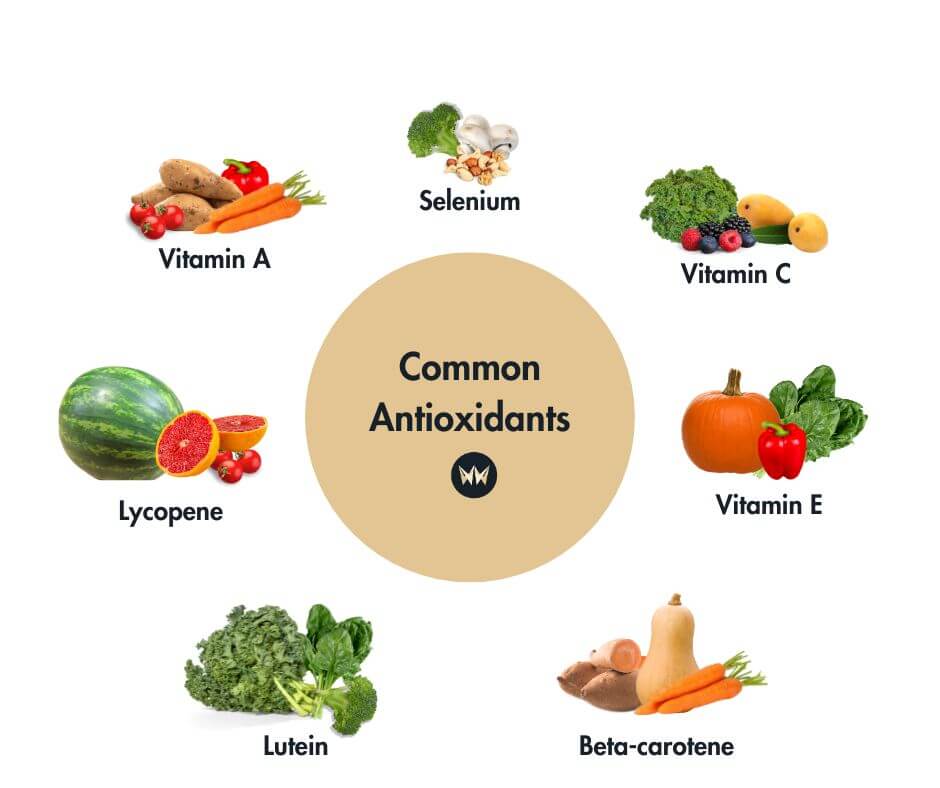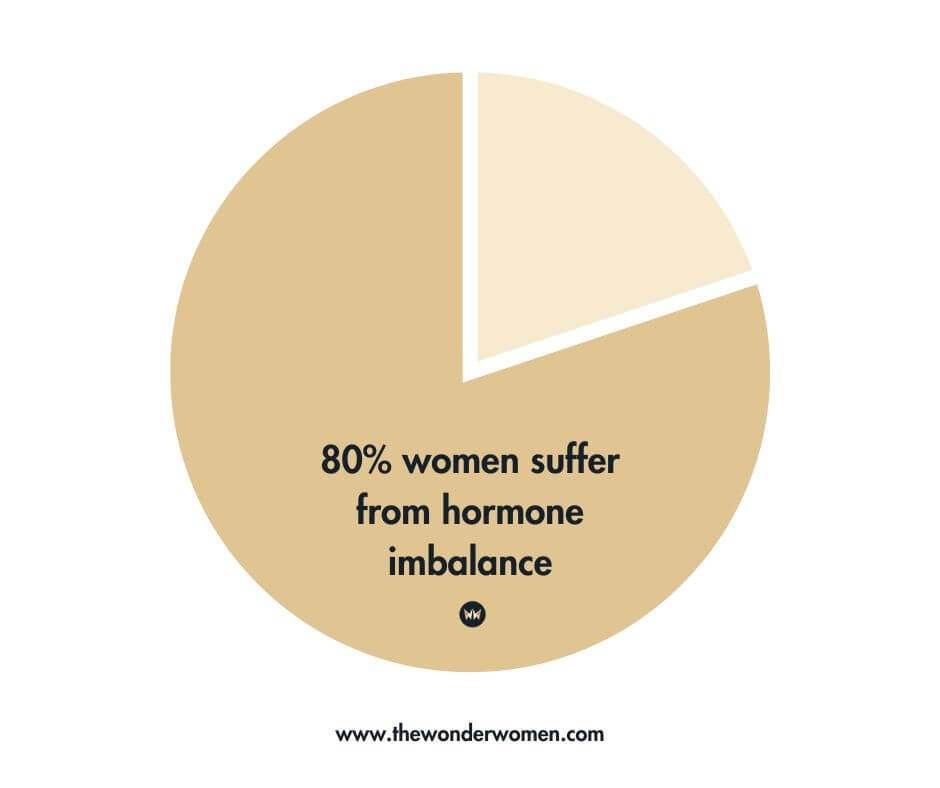Edited by Michelle MacDonald
You’ve probably heard that you should eat your greens, but eating a variety of fruits and vegetables, all colors of the rainbow is just as important as the quantity of produce you’re consuming. Eating a balanced diet is important for everyone and the reasons you should eat more fruits and vegetables are as plentiful as your choices in these food groups are.
One food group can’t provide all the vitamins, minerals, and antioxidants our bodies need to function at their best. Eating a variety of colorful fruits and vegetables provides the healthy mix of nutrients we need.
Guidelines to follow
General guidelines suggest eating 5 servings of fruits and vegetables a day, but we recommend 7-9 servings a day (or more). The average American is eating far less. Only 1 in 10 adults gets their recommended servings of fruits and vegetables every day, which means they are missing key nutrients that can help reduce the risk of chronic diseases, cancer, hypertension, diabetes, obesity, cardiovascular diseases, and more. (1)
Increasing fruit and vegetable servings can impact all functions of the body from balancing hormonal health to weight management, preventing diabetes, improving heart health, immunity, and more.
Scientific Ways Fruits and Vegetables Impact Your Health
Variety of Phytonutrients Support Optimal Health
A phytonutrient is a broad term for the compounds in fruits and vegetables that give plants their color, taste, and smell. They are found in fruits, vegetables, grains, beans, and other plants. Each color or phytonutrient represents hundreds of chemicals that perform specific functions in the body like reducing inflammation, balancing hormones, supporting heart health, preventing diabetes, and even some cancers.
Scientists have identified thousands of phytonutrients. Eating a variety of fruits and vegetables is the best way to get a large range of the important phytonutrients and antioxidants our bodies need.
Common phytonutrients:
- Betacarotene is found in leafy green vegetables or orange fruits and vegetables. Betacarotene supports the immune system, vision, skin, and bone health.
- Resveratrol promotes heart health and can also be anti-cancer, and anti-inflammatory. It can be found in dark-colored fruits like red grapes or even red wine.
- Lutein supports eye health, heart health, and has been shown to protect against certain cancers. Lutein is found in dark leafy greens like spinach, brussel sprouts, or broccoli.
- Lycopene is found in red produce, specifically tomato products. Lycopene has been linked to preventing prostate cancer and supporting overall heart health. (5)
Try making this Roasted Sweet Peppers recipe with red or orange peppers for a natural boost in phytonutrients.
Antioxidant Powerhouse
Fruits and vegetables are a great source of antioxidants. Studies have shown that eating a diet with a variety of produce can lower your risk of disease and combat the effects of aging on the body.
Here’s how it works. The cells in your body are under attack every day from viruses, infections, and free radicals. Free radicals are naturally produced in the body but lifestyle factors such as environmental toxins, processed foods, smoking, and alcohol consumption can increase their production and can cause damage to your cells and DNA. This can contribute to health conditions like cancer, heart disease, and diabetes.
Antioxidants are important because they are natural substances that help prevent, delay, or even reverse cell damage caused by free radicals. They also play a big role in your immune health.
Common antioxidants:
- Vitamin A (tomatoes, red bell pepper, carrots, sweet potato, winter squash)
- Vitamin C (berries, citrus fruits, broccoli, bell peppers, kale)
- Vitamin E (spinach, kale, collard greens, pumpkin, red bell peppers)
- Beta-carotene (carrots, squash, sweet potatoes, peaches, apricots)
- Lutein (spinach, broccoli, kale, peas, leafy greens)
- Lycopene (grapefruit, watermelon, apricots, cranberries, tomatoes)
- Selenium (mushrooms, broccoli, spinach, nuts, beans)

You can get most of these antioxidants by eating a variety of colorful fruits and vegetables. Seeds, nuts, and whole grains provide a good source of antioxidants as well.
This Ratatouille recipe provides a great antioxidant boost. With tomatoes, eggplant, mushrooms, and peppers, you are getting a variety of some of the most common antioxidants.
Anti-Cancer Properties
Some studies have shown a link between a diet high in colorful fruits and vegetables and protection against cancer.
Research from the Health Professionals Follow-up Study suggests that lycopene, one of the pigments that give tomatoes their red color, could protect against prostate cancer. Several studies have demonstrated a link between lycopene and prostate cancer, while others have not. More research is ongoing, taken as a whole, these studies suggest an increased consumption of tomato-based products may reduce the occurrence of prostate cancer.
Additionally, lycopene, which is one of many carotenoids found in brightly colored fruits and vegetables, may protect against lung, mouth, and throat cancer. More research is ongoing (2).
A Nurses’ Health Study I and II also found that women who consumed more than 5 servings of fruits and vegetables a day had an 11% lower risk of developing breast cancer than women who ate 2.5 servings or less. Daily vegetable intake was also associated with a 15% lower risk of estrogen-receptor-negative tumors for every two additional servings of vegetables consumed daily (2).
A quick and easy recipe packed with lycopene is this Roasted Tomato Soup.
Manage or Prevent Diabetes
Diabetes is a growing health concern across the world. It’s estimated that nearly 600 million people globally will be affected by diabetes by 2035. Diabetes is predicted to become the major cause of death and disability in the world in 2030.
Making dietary changes is a proven way to delay or prevent type 2 diabetes.
Download Our Free Macro Guide To Start Making Dietary Changes Today!
The fiber found in fruits and vegetables plays a key role in controlling your blood sugar levels, which is extremely important for people with diabetes or prediabetes.
Fiber is a type of carbohydrate found in fruits and vegetables, whole grains, and legumes. It takes our bodies longer to break down high-fiber foods, which means glucose can’t enter your bloodstream as quickly and cause a blood sugar spike the way other carbohydrates might. This helps you maintain more consistent blood sugar levels throughout the day.
A Nurses’ Health Study found that high consumption of whole fruits is associated with a lower risk of developing type 2 diabetes. Conversely, the study found that high consumption of fruit juice (fruit without fiber) was associated with a higher risk of type 2 diabetes (2).
The study also found the consumption of green leafy vegetables was linked with a lower risk of developing diabetes as well (2) (7).
You want to get at least 25 grams of fiber per day. Not only will this help reduce the risk of diabetes but will also provide satiety with every meal.
This Avocado Spinach Cream Sauce recipe is a delicious way to boost your fiber intake with all the additional nutrients of a fruit and vegetable.
Support Hormonal Health
More than 80% of women suffer from a hormonal imbalance at some point throughout their life. Studies show that 70% of women are completely unaware of their condition. (4)

Hormones are chemical messengers that are produced by our endocrine glands. They impact every part of the body. Hormones have many roles from controlling metabolism to regulating your body, growth and development, mood, fertility, stress, digestion, and more.
When our hormones are not balanced, we can experience a number of health issues like anxiety, weight gain or loss, fatigue, cycle changes, infertility, or diabetes.
The food we eat can have a big impact on our hormone health. It’s important to provide our bodies with the vitamins and nutrients to produce and regulate hormones effectively.
Fruits and Vegetables for Hormone Health
- Cruciferous vegetables like kale, arugula, and brussel sprouts, help metabolize excess estrogen which can reduce symptoms of hormonal imbalance and even protect from certain estrogen-dominant strains of cancer.
- High-fiber carbs like root vegetables, sweet potatoes, berries, and bananas can naturally help regulate estrogen and cortisol levels. Avocado is also rich in fiber, healthy fats, and vitamins that support hormone health. They have been shown to help regulate estrogen and progesterone and regulate ovulation.
- Berries are also high in antioxidants which can help regulate hormones and reduce inflammation.
When trying to balance your hormones, it’s helpful to eat organic fruits and vegetables as much as possible. Conventional produce has been treated with pesticides and other chemicals that can act as hormone disruptors.
Other foods can play a role in hormonal health as well. Healthy fats high in omega-3s like olive oil, salmon, chia, and flax seeds provide hormone regulation as well as probiotics and probiotics.
To incorporate as many hormone-balancing foods as possible, try Maple Ginger Salmon Fillets over dark greens with sweet potatoes.
Combat Hypertension
Hypertension, which is defined as blood pressure above 140/90, is a major risk factor for cardiovascular diseases. It is the leading cause of stroke in the United States and it’s estimated that more than 40% of Americans will have hypertension by 2030.
Diet modifications, such as increasing fruit and vegetable intake have been shown to lower blood pressure.
Research has found that people who eat more whole fruits are less likely to develop high blood pressure than those who rarely consume fruit. (6) Vegetables such as broccoli and carrots are shown to be the best for preventing high blood pressure.
Fruits and vegetables contain potassium and flavonoids, which have both been linked to lowering blood pressure. Whole fruits and vegetables can also counter the impact of salt, or sodium, which raises your blood pressure.
Simple changes in your diet like swapping these Crispy Carrot Fries baked in the oven instead of fast food french fries will make a big difference..
Weight Management
The quantity of fruits and vegetables you consume is linked with weight management.
Being above a healthy weight increases your risk for chronic diseases, type 2 diabetes, cardiovascular disease, and even some cancers. Eating healthy, and increasing the servings of fruits and vegetables you consume daily is a key factor in preventing obesity and disease.
Naturally replacing unhealthy food choices with healthy produce like berries, apples, and green leafy vegetables, will help with weight loss or weight management. High-fiber fruits and vegetables are satiating and can help control any hunger cravings. Just be aware of consuming too many starchy vegetables like potatoes, peas, or squash.
Smoothies are one of the best ways to consume healthy fruits and vegetables. Click here for some great smoothie recipes that will fit your macros.
References:
https://www.healthline.com/nutrition/why-is-fiber-good-for-you

